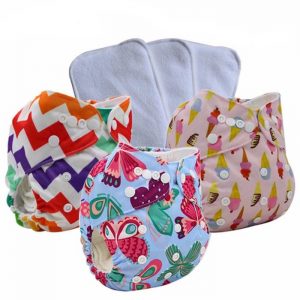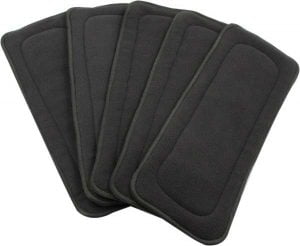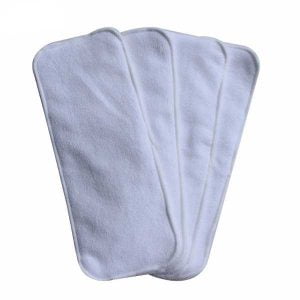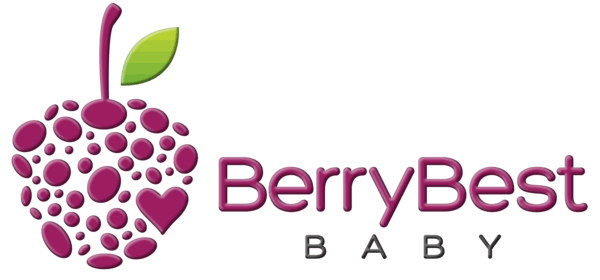Wondering what all the fuss is about? Cloth diapering has come a long way in the last century. The 5 main kinds of modern cloth diapers are prefolds, fitted diapers, pocket covers with inserts, all in one’s and hybrids. Here we will go into detail about the pocket style.

The first pocket diapers were introduced to the market in 1992. These are the first true “modern” cloth diapers incorporating a waterproof outer and a breathable soft inner. Absorbency inserts are added into the “pocket” between the two layers and the hourglass shaped reusable is secured with snaps or hook and loop closures.
By far the cloth pocket diapers are the most popular reusables today. They are designed to be effective and convenient and easy to wash.
Features of One Size Pocket Diapers:
- Waterproof Outer
- Soft breathable Inner
- Pocket for adding absorbency
- Adjustable rise and waist with snap closure
- They come in a never ending variety of adorable prints!
Benefits:
Pocket styles are available in sized options, but more popular are the one sized covers that have an adjustable rise and waist with snaps and/or hook and loop closures that can change in size as bub grows. If you wanted to purchase one set of nappies to last the life of your diapering needs, then pockets are a fantastic option.
They’re easy to use and wash. Covers dry quickly so can be reused while the inserts are still drying. It is worth purchasing extra inserts for this reason. Because the inserts can be separated from the cover they are easier to get clean, and you can chuck the inserts into the dryer without damaging them and air dry the covers to extend their lifespan.
Extra absorbency can be added, usually bamboo or hemp, for overnight though you will need to make sure your cloth diaper covers are fitting correctly around the legs to reduce the chances of leakage. Our favorite range of pocket diapers have a great quality elastic around the legs to reduce this problem. Being able to add inserts for customized absorbency is a big advantage of using a onesize pocketstyle cloth diaper.
Disadvantages:
You need to make sure the leg elastic is firm enough so leaking is not an issue. Also un-stuffing can be less than pleasant, although a good pair of rubber dish gloves helps with this process immensely. Just dry-pail the dirty ones, and unstuff them all at wash time.
With pocket diapers the fabric against the skin is a micro suede or microfiber which is designed to wick the moisture away from babies skin for a ‘stay dry’ feel. While this is very effective, some parents prefer to have a completely natural fiber touching their babies skin.
As with any cloth diaper, sometimes baby clothes are styled a bit small because they’re designed to use over a disposable diaper. This is easily overcome by purchasing a bigger size than you normally would.
When looking at diaper bags you also need to keep in mind that your cloth diapers will take up much more space than compact disposables.
You’ll have to live with diaper pails. There are certainly ways to make your diaper laundry process as efficient as possible though and if you’re committed, it really doesn’t have to be a huge deal.
More about Pocketstyle Cloth Diapers
Pocket diapers can be purchased with a double gusset which gives added protection against unwanted ‘explosions’. This is a huge advantage and if you follow our simple washing instructions you are sure to get the extra gusset completely clean.

Charcoal Bamboo Inserts
Diapers with charcoal bamboo fleece inners are also another popular choice. This fabric provides another lovely comfortable fabric against babies skin even when wet. The charcoal bamboo is a charcoal color which means that any solids stains will not show as easily as the more traditional white inners of the pocket styles.
When adding more absorbency especially for overnight, you may like to consider adding a doubler with your normal insert which is often designed in an hour glass shape to help fit better around the legs while giving much more absorbency. Sometimes a doubler is simply a narrower rectangle insert, again to avoid too much bulk around the edges. These smaller doublers are also ideal to use alone for newborn inserts so your new bub doesn’t have too much bulk around the legs when they don’t need the extra absorbency.
Pocket Diaper Inserts Materials
- Microfiber: Most pocket diaper covers come with the microfiber insert. It is quick to absorb moisture, but will not hold as much as bamboo or hemp. It is great for daytime use, but if your baby is a heavy wetter, then layering bamboo with microfiber on top is a great option.

Microfiber Inserts
- Cotton: This is the most traditional fabric to use for cloth diapers. It’s affordable and widely available, and although not as absorbent as other fabrics, it is fine to use in your pocket diapers.
- Hemp: Usually blended with cotton, hemp is the super soaker of the diapering world. Cotton gives the hemp a softer feel, though can still feel quiet stiff coming off the clothes line.
- Bamboo: Bamboo fabric and fleece is not technically a natural fabric due to the processes that are used to manufacture it. However it is still extremely absorbent and is quick to dry which are both amazing qualities for inserts.
Popular Cloth Diaper Brands – Pocket Style
See our simple ways to wash cloth diapers here.
Have you checked out a favorite baby carrier yet? Also, have you heard about wool covers?

